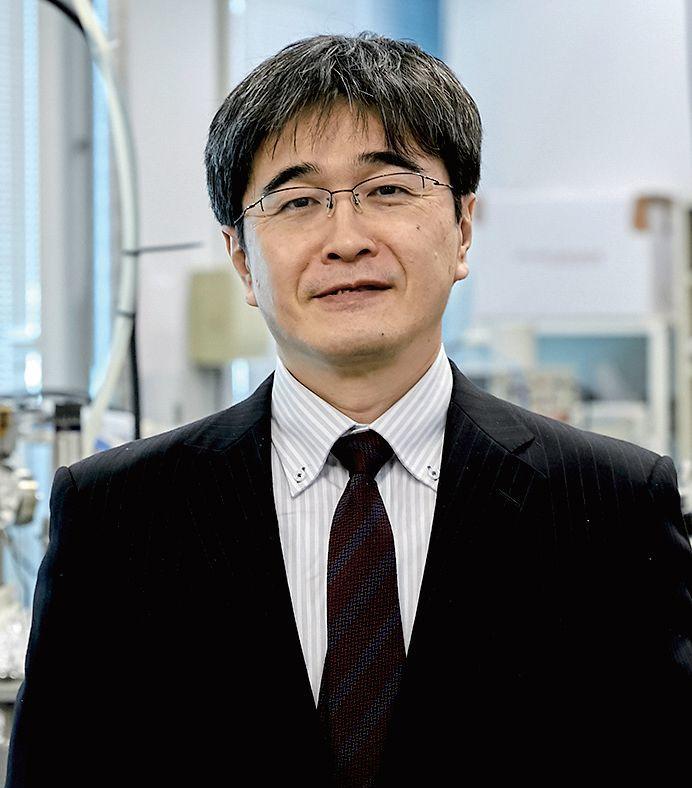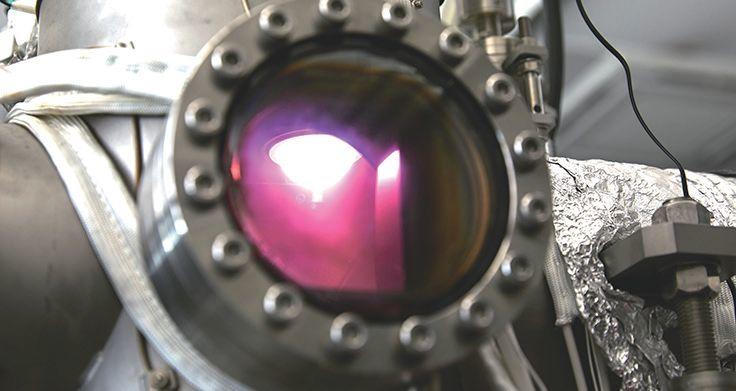- TOP
- Cutting-edge Research and Social Contribution
- Cutting-edge Research
- Solving local and global issues by realizing high-efficiency energy devices based on nanomaterials

Solving local and global issues by realizing high-efficiency energy devices based on nanomaterials

FURUTA Hiroshi
- Specialized field
Thin Film Technology, Nano-materials, Condensed Matter Physics, Applied Optics/Quantum Optics, Energy devices (Electricity generation, storage, conversion), Metamaterial
Eliciting new properties of light through nanoscale circuit design
Metamaterials are artificial structures, such as electrodes, with circuit design at a scale larger than atoms and molecules, but smaller than electromagnetic waves. They exhibit properties and functions unattainable with ordinary materials. CNTs are a promising component of metamaterials due to their outstanding electrical and optical characteristics. Previously, the mainstream nanotechnology technique has been a top-down process of producing fine-patterns by processing materials. This process is approaching the lower limits of size, however, and that is sparking active research on bottom-up approaches, where atoms and molecules spontaneously form into ordered structures of higher dimensionality.
CNTs can be grown like plants simply by supplying carbon source gas to nanoparticles of catalyst deposited on a substrate. Due to this "self-organized growth process," CNTs promise easy bottom-up fabrication of the fine-patterned, complex structures indispensable for metamaterials.
We see self-organized patterns everywhere in the natural world. Examples include the sophisticated washing function of the surface of a snail's shell and the adhesive function of the bristles that grow on the toes of lizards. Many organisms employ nanotechnology built through self-organization. In imitation of the self-organizing phenomena observed in nature, Prof. Furuta has produced various nanostructures using CNTs, and identified unique functionalities with potential applications in metamaterials.
High-density CNTs aligned in the same direction perpendicular to a substrate are called a "CNT forest" because they look like a forest of trees. This material is attracting attention as the "blackest of all substances," capable of absorbing light of all wavelengths with high sensitivity. In their efforts to fabricate metamaterials using CNT forests, Prof. Furuta and his colleagues developed a technique for forming microparticle arrays in the shape of a split ring resonator (SRR)--one form of metamaterial--by patterning catalyst microparticles with a focused ion beam (FIB). Evaluation of the properties of CNT forests with an SRR structure, fabricated with this technology, showed that reflection intensity of infrared light is reduced by a resonance phenomenon in the circuit, so that metamaterial performance is exhibited. This achievement, the world's first case of fabricating a metamaterial with CNTs, was featured in a prestigious journal and received high acclaim.
Prof. Furuta has also noticed the structures formed, through self-organization, by low-density CNT forests under a carbon film, and successfully controlled the structure thickness. He was the first to discover the outstanding optical characteristics of these structures, and he named them "frost column-like CNT forests" due to their similarity to frost columns. He has shown that frost column-like CNT forests processed into a fishnet form, with periodic holes opened in the carbon film, have increased absorption of infrared light compared to unprocessed structures, thus eliciting their metamaterial characteristics.
Building on these achievements, Prof. Furuta and his team are pioneering the field of "CNT forest metamaterials."

Development of fabrication techniques for larger-area CNT forest metamaterials
Larger area will be needed to apply CNT forest metamaterials to energy devices. However, increasing area is acknowledged as technically difficult when using FIB processing techniques. Thus, Prof. Futura and colleagues have developed a new technique for building up CNT forests through self-organization. This technique uses the dry etching method, crucial for semiconductor integration, as an alternative method. They have demonstrated the ability to control the absorption and reflection of specific wavelengths--a hallmark of metamaterials--using CNT forests produced through this technique. By fabricating CNT forests with self-organizing techniques allowing larger area, and discovering their metamaterial characteristics, they may have found a key to realizing large-area CNT forest metamaterials.
Prof. Furuta is also developing high-efficiency solar water heaters, utilizing CNTs to bridge these research outcomes with practical applications. His investigations so far have focused on improving performance. For example, he has compared the temperature increases of commercial materials and CNTs as a light absorbent, and discovered that temperature rises more readily with CNTs.
Through this sort of R&D, Prof. Furuta hopes to use nanomaterials to help solve global energy problems. He aims to create low-cost, environmentally-friendly energy devices, to help address energy challenges in rural areas and developing countries.
One of the UN's Sustainable Development Goals (SDGs) for 2030 is to secure access to safe and affordable drinking water for all people worldwide. In this connection, Prof. Furuta says "We are also looking at using technology for recovering unused thermal energy, in the process of producing distilled water from seawater in developing countries." Prof. Furuta has demonstrated the potential of CNTs in all areas, from basic research to applications. Going forward, he will continue to think outside the box, drawing inspiration from nature, and developing nanotechnology to contribute to the sustainable development of humankind.

Date of posting: January, 2024/ Date of interview: April, 2022
